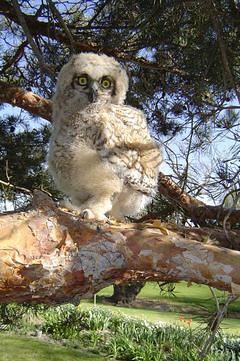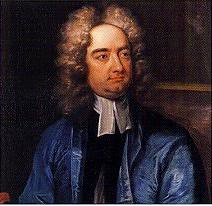Aesthetics: Arts: Stories to Tell, the fine art of illustration - an American heritage
.
the Importance of Narrative in Pre-Modernist American Painting Tradition
The material that was going to serve for drafting an article on a vital element of America's fine-arts painting and drawing has been uneartherd from our archive. Stories to Tell, by Ken Johnson, appeared Apr13,2006 in the Christian Science Monitor (I guess, will have to check out this fact and re-write).At one time, serious artists avoided illustration like the plague. When abstract formalism ruled in the 1960's, painters were not supposed to use their skills to tell stories of escapist adventure or erotic intrigue, and did not lend their talents to the marketing of shirts and toothpaste — or to magazines like The Saturday Evening Post.
I didn't want to let this great piee of artwriting pass refWrite readers entirely, so I've reproduced it in its entirety while a check out the particulars. The piece appeared in April and ran in conjunction with an exhibition, I'm guessinjg again, in New York city. The exhibit has come and gone, and only the story remainss ... and the paintings. "Stories to Tell: Masterworks From the Kelly Collection of American Illustration" is at the Dahesh Museum of Art, 580 Madison Avenue, at 56th Street, (212) 759-0606, through May 21. So, I'm just a month late getting this blog-entry online. Mea Culpa - Viewpoint
"For a Space of Minutes," an oil painting from 1915 by Harvey T. Dunn.
J. C. Leyendecker's painting "Florist," from the Kelly Collection.
In today's art circles, it can be hard to find an artist whose work does not illustrate something, and that is partly what makes an exhibition of paintings from the so-called golden age of illustration, "Stories to Tell: Masterworks From the Kelly Collection of American Illustration," now at the Dahesh Museum of Art, surprisingly gripping. In an era that has been shaped by narrators like Philip Guston, Cindy Sherman and, recently, Dana Schutz, it is illuminating to study how skilled and tremendously successful visual storytellers like Howard Pyle, N. C. Wyeth and J. C. Leyendecker performed.
Organized by the museum's chief curator, Stephen R. Edidin, the exhibition presents 90 original paintings and drawings by 35 artists, dating from the 1880's to the 1930's, a time when magazine and book illustrations captivated the American imagination the way movies do today. The works are from a collection assembled by Richard J. Kelly, a private investor who lives in Great Falls, Va.
One prejudice that the exhibition dispels is that illustrators care less about their mediums than about making images. The paintings and drawings in this show were made to be photo-mechanically reproduced, but every artist clearly intended the work to be seen as a painted or drawn picture. Many exaggerated painterly aspects so that the hand-made qualities would not be lost in reproduction. And most had trained in the same American and European art schools that their fine-art counterparts attended.
The relationship between image and paint is most striking in the works of Leyendecker, whose paintings from the 1920's epitomized the insouciant elegance and exuberant energy of the Jazz Age. With emphatic contour lines and sharp contrasts of darks and lights, Leyendecker painted men and women of supernatural beauty posed in fanciful situations. A 1909 painting features a sumptuously dressed couple flying a Wright Brothers-type airplane. In one from the 20's, a lovely flower girl pins a corsage to the lapel of a man in top hat and tails.
These images may seem silly, but the way they are painted imbues them with an uncanny vividness and erotic energy. The slashing but suavely controlled brushwork and the sparkling highlighting gives his subjects a gleaming, sculptural quality. No doubt they fueled the imagination of F. Scott Fitzgerald.
vis à visArt, by Viewpoint
Because of advances in reproduction technology, Leyendecker's kind of graphic high-definition was not an artist's only option. Walter Biggs, for example, used an Impressionist style. In an illustration from about 1930 for a Palmolive advertisement, a young woman in a pink gown sits under a flowering tree that filters dappling sunlight. The soft-focus, pastel colors and shimmering light conjure a sense of Edenic immersion in the sensory pleasures of nature.
It is unusual for an illustrator to allow concerns about painting and perceptual experience to override the narrative point, but that does happen in one of the show's best works, Walter Everett's picture of a man purchasing a parrot in an exotic marketplace. The story being illustrated cannot compete with the lush, complex play of light and color in the baskets of fruit and clay jars in the foreground. Not surprisingly perhaps, Everett had trouble meeting deadlines and retired early from a business he found intolerably frustrating.
All the other artists put expressive style to the service of narrative and emotional impact. In a Winslow Homer-like maritime scene by Harvey T. Dunn, thick paint, stark contrasts of light and shadow, lunging diagonals and billowing volumes enhance the climactic moment of a stormy night when a woman tries to restrain a wild-eyed, pistol-waving sea captain. In Saul Tepper's "Couple in the Moonlight," a picture of a handsome man and his pretty wife sitting on the front steps of their suburban home, the patchy paint and the Whistlerian lunar light bring to life a moment of spiritual awakening in a Ladies' Home Journal melodrama.

 >br>
>br>









No comments:
Post a Comment